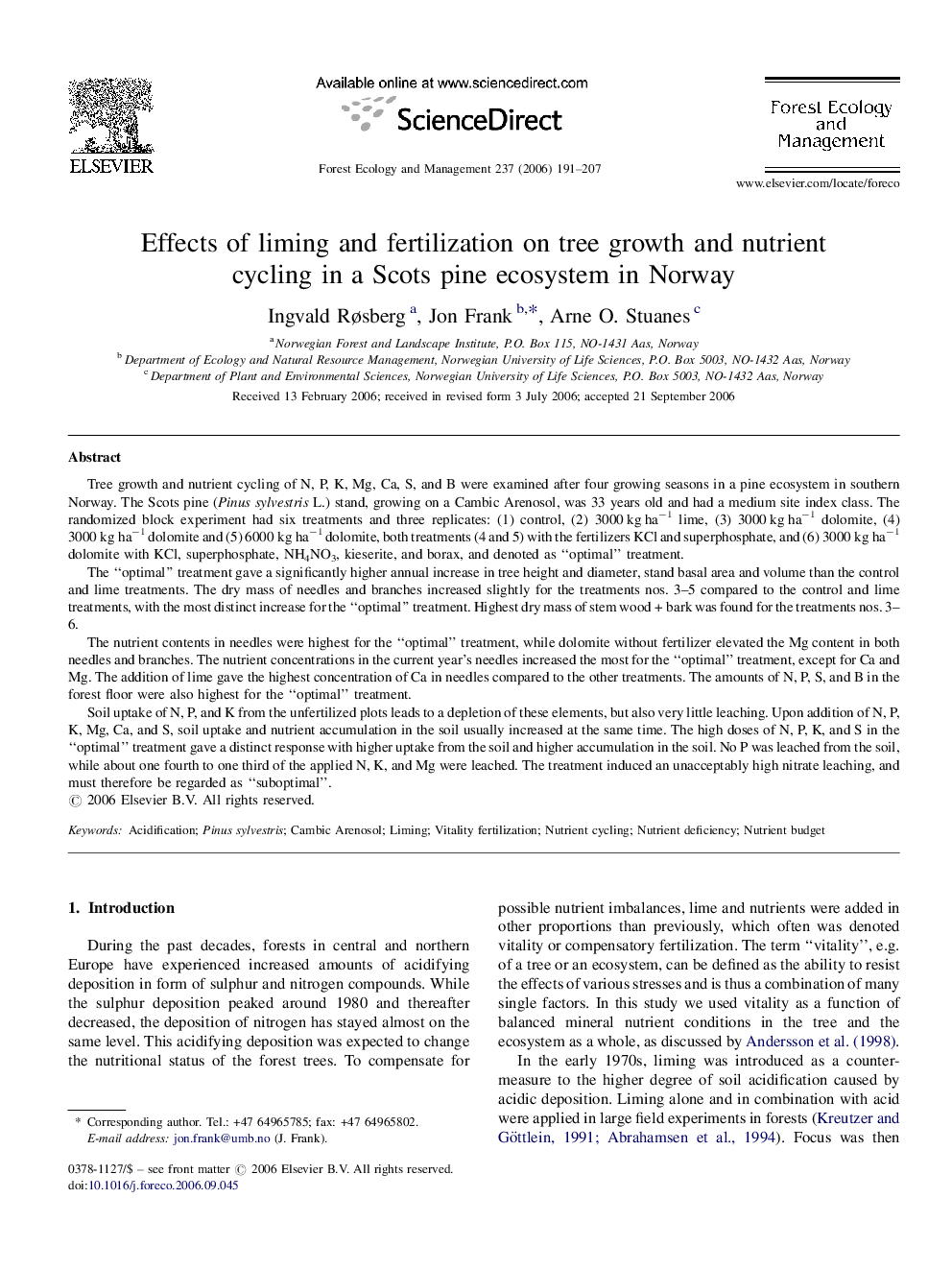| کد مقاله | کد نشریه | سال انتشار | مقاله انگلیسی | نسخه تمام متن |
|---|---|---|---|---|
| 89951 | 159360 | 2006 | 17 صفحه PDF | دانلود رایگان |

Tree growth and nutrient cycling of N, P, K, Mg, Ca, S, and B were examined after four growing seasons in a pine ecosystem in southern Norway. The Scots pine (Pinus sylvestris L.) stand, growing on a Cambic Arenosol, was 33 years old and had a medium site index class. The randomized block experiment had six treatments and three replicates: (1) control, (2) 3000 kg ha−1 lime, (3) 3000 kg ha−1 dolomite, (4) 3000 kg ha−1 dolomite and (5) 6000 kg ha−1 dolomite, both treatments (4 and 5) with the fertilizers KCl and superphosphate, and (6) 3000 kg ha−1 dolomite with KCl, superphosphate, NH4NO3, kieserite, and borax, and denoted as “optimal” treatment.The “optimal” treatment gave a significantly higher annual increase in tree height and diameter, stand basal area and volume than the control and lime treatments. The dry mass of needles and branches increased slightly for the treatments nos. 3–5 compared to the control and lime treatments, with the most distinct increase for the “optimal” treatment. Highest dry mass of stem wood + bark was found for the treatments nos. 3–6.The nutrient contents in needles were highest for the “optimal” treatment, while dolomite without fertilizer elevated the Mg content in both needles and branches. The nutrient concentrations in the current year's needles increased the most for the “optimal” treatment, except for Ca and Mg. The addition of lime gave the highest concentration of Ca in needles compared to the other treatments. The amounts of N, P, S, and B in the forest floor were also highest for the “optimal” treatment.Soil uptake of N, P, and K from the unfertilized plots leads to a depletion of these elements, but also very little leaching. Upon addition of N, P, K, Mg, Ca, and S, soil uptake and nutrient accumulation in the soil usually increased at the same time. The high doses of N, P, K, and S in the “optimal” treatment gave a distinct response with higher uptake from the soil and higher accumulation in the soil. No P was leached from the soil, while about one fourth to one third of the applied N, K, and Mg were leached. The treatment induced an unacceptably high nitrate leaching, and must therefore be regarded as “suboptimal”.
Journal: Forest Ecology and Management - Volume 237, Issues 1–3, 15 December 2006, Pages 191–207